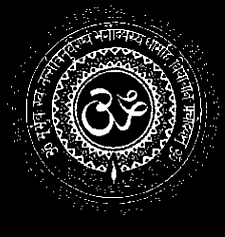AryadevA is certainly not an NSBM (National Socialist Black Metal) band nor do we support racial prejudice! We are not NS sympathizers! In general, AryadevA exclusively plays a form pagan black metal band which they call it as “Slavo-Vedic Black Metal”. This term is derived from ‘Slavonic Metal’ and ‘Vedic Metal’ (Vedic Metal, a veiled sub-genre in the pagan metal scene was first pioneered by Rudra (Singapore)). Such derivations obviously refers to a pagan identity, the Indo-Slavic (proto-Indo-European) paganism.
Musically, AryadevA strongly in cooperates black metal with a little bit of death & thrash metal, symphony/epic/folk/pagan tunes. The lyrics dealt on Indo-Slavonic paganism, atrocities by the mass organized religions unto the (ancient) Pagans and blaspheming mass organized religions.
(Indo-Slavs): The Ancient Slavs & The Vedic Indians
will be updated in the near future | also note that I am pointing out similiarties which suggests that the Vedic Indians and Pagan Slavs could have had a common ancestor
“According to at least one source, Slavs are the only people among the European nations with mythology based on Indo-European and Indo-Iranian beliefs. They are believed to be of Indo-European stock, so there are many similarities between Hindu and early Slavic worlds: practice of cremation and belief in reincarnation; karma, in which like produces like; existence of vampires, phallic deities plus polycephalous gods in their mythologies; having the sun represented by Sanskrit SU'RYA and Slavic ZORYA; and the use of waving iron to drive away demons. Also, women played an important part in religious ceremonies.”
~ Richard Stoney of Orleans, CA
These 2 groups are part of the Indo-European (IE) language speaking group. The IEs are derived from a hypothetical theory of the proto-Indo-European (PIE). The PIE lived about 9,000 years ago in Central Asia and they migrated towards northern India and to the west. Current studies (Luigi Luca Cavalli-Sforza) of genetic flow indicate that migrations occurred in the ancient times towards ancient Europe.
The Slavs and Indians are closely connected due to their IE origin; both by language, (ancient) culture-religion & lastly not to mention genetic similarities. The people of ancient Slavs and Vedic Indians probably share a common ancestor to their language; respectively old Russian and Vedic Sanskrit.
The Gods of Pagan Slavs (PS) and Vedic Indians (VI) have many similarities. One of the most striking similarities would be the thunder gods; Per-un (PS) and Par-gan-ya (VI) respectively. The etymology of these names comes from the IE root word ‘perk’ / ‘park’ meaning ‘to strike’.
(Additional information: The Balts have a similar name Per-kunas and the Poles with Pior-un. Parganya is also refer to as Indra)
Both Perun and Parganya are described carrying a bow and a set of arrows in contrast to other IE thunder Gods; a hammer. In the other Slavic tribes, he holds an axe. Their arch enemies were Veles (PS) and Vala (VI). The battle between Perun-Veles and Parganya-Vala involves Veles/Vala stealing the cattle of Perun/Parganya. Both thunder Gods also own a hound respectively.
The PS has a heroic character by the name of Krishen. The epics of Krishen are similar to that of the Krishna (VI). One of the ‘goddess of love’ of PS is known as Kama, similar to that of the people from Hindu-Kush, also named Kama. Vyshen, a supreme Slavic deity can be parallel to Vishnu, a supreme Hindu deity.
In PS, it is typical that many gods has a ‘-bog’ suffix added at the end of their names. ‘-bog’ is similar to Sanskrit ‘bhaga’ meaning ‘God’. In PS, the God of sky is known as Svar-og. The ethymology for this name can be traced to Sanskrit Svar-ga (meaning heaven or sky). Another ruler of the sky is Diy (PS) and Dyaus (VI) respectively. As for the God of death, Yama (VI) and Yarila or Yima (PS), respectively.
In the past, there was the existence of Russian Vedas and Veda Slovenia (in Slovenia) – the contents of this literature are said to be similar to that of the Vedas. Only fragments of these literuatre survived as they were destroyed by Christian invasion into Slavic regions.
Among the various languages of the Slavic tribes; Slovenian has a strong connection to Sanskrit. In Slovenian, 20% of the words are traceable to Sanskrit along with grammatical similarities. In remote villages of Lithuania, Latvia, Russia — theoritically, peasants roughly would be able to interpret spoken Sanskrit.
The etymologies of Slavic countries can be identified in Sanskrit. Almost all the names of Slavic countries and cities (countries: Russia, Slovakia | cities: Buddhapest) have meaning in Sanskrit. Some of these names have no local origin. An example would be Croatia, pronouncing Croatia in the dialect of the natives would be ‘hra-va-ta’. According to scholars (even Croatian scholars!), this term is definitely of foreign origin and does not originate from the local tribes. During the Yugoslavian rule, it was forbidden for Croats to study on their ethnical background and they were ‘forced’ to accept a Slavonic heritage as their past. After the demise of Yugoslavian rule, Croats proudly identified their roots amongst the ancient Indo-Iranians (particularly Aryan Persians). According to Croatian scholars, Hravata is indeed the cognate of Saraswati? How this is possible? In Avestan, ‘Sa’ of Sanskrit, is replaced with ‘Ha’ – a clear example would be the derivation of Hindu; from Sapta Sindhu (Sanskrit) to Hapta Hinduwa (Avestan).









